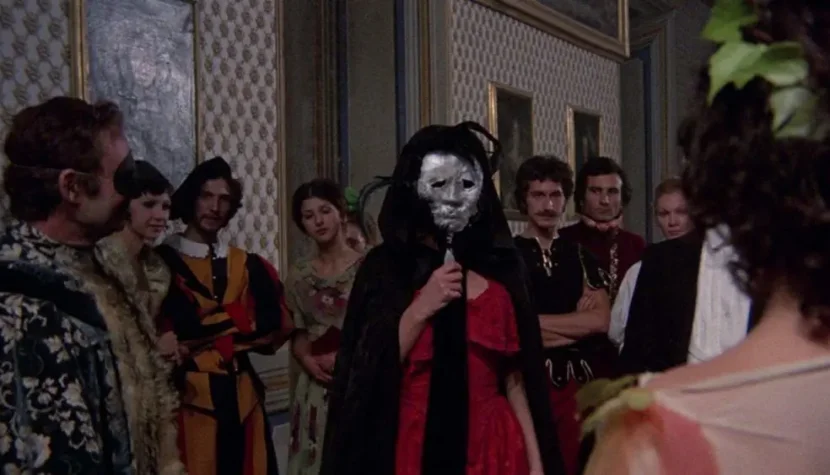DEATH SMILES ON A MURDERER. A mix of Gothic horror and giallo

“I don’t understand any of this, it doesn’t make any sense,” says one of the characters in the film Death Smiles on a Murderer, effectively summarizing the plot.
The story is set at the beginning of the 20th century. A young man, Franz von Holstein, mourns his deceased sister Greta, who, to his dismay, had become involved with a local doctor named Ravensbrück. Three years later, a carriage accident occurs near the estate of Ravensbrück’s son Walter and his wife Eva. The coachman dies on the spot, and the only survivor is a girl strikingly similar to Greta. Dr. Sturges, who is called to tend to the injured girl, detects no signs of life but conceals this fact from the Ravensbrücks. The girl doesn’t remember who she is or where she came from, and the only clue to her identity is a medallion she wears inscribed with “Greta 1906.” Walter and Eva take the mysterious girl under their care, and both gradually fall in love with her, leading to mutual suspicion and jealousy. Meanwhile, a series of murders shocks the local area.

Death Smiles on a Murderer is one of nearly 200 films in the career of Aristide Massaccesi, aka Joe D’Amato (1936–1999), an Italian director, screenwriter, producer, cinematographer, and photographer. Like his compatriot and colleague Antonio Margheriti, Massaccesi was quick, efficient, and capable of making films in almost any genre with almost any (usually small) budget. His filmography includes westerns (Scansati… a Trinità arriva Eldorado (1972)), comedies (Novelle licenziose di vergini vogliose (1973)), peplum (Diario di una vergine romana (1973)), swashbucklers (Pugni, pirati e karatè (1973)), war films (Eroi all’inferno (1974)), science fiction (Endgame (1983)), fantasy (Ator, the Fighting Eagle (1982)), as well as an abundance of erotic films (around 120 titles!) and horror films, the most famous being Beyond the Darkness (1979), Anthropophagus (1980), and Absurd (1981).
The credits for Death Smiles on a Murderer list Massaccesi, Romano Scandariato, and Claudio Bernabei as screenwriters, but the director claimed to have written the script himself, something he attributed to the film’s failure: “I’m afraid it’s a very flawed film, but that’s because I wrote the screenplay myself. When you don’t work with someone else, it’s much harder to come up with a good product, and I was really inexperienced when it came to writing scripts” [1]. Massaccesi used his own ideas in the script, along with motifs from giallo films and literary works such as Joseph Sheridan Le Fanu’s Carmilla and stories by Edgar Allan Poe, including The Cask of Amontillado, The Black Cat, and The Masque of the Red Death. The film was made on a budget of 150 million lire, which didn’t pay off: after its release, ticket sales totaled just over 70 million lire [2].

Death Smiles on a Murderer is an odd mix of Gothic horror and giallo – a tale of revenge from beyond the grave combined with a story about a voyeuristic serial killer. The creators also included elements of gore and exploitation cinema, but this genre juggling didn’t benefit the film: the pace often falters, plotlines are left undeveloped, and the disjointed narrative and numerous time jumps disrupt the clarity and coherence of an already convoluted plot. To make matters worse, there is little suspense, tension, or true horror. However, Death Smiles on a Murderer has some redeeming qualities: a dense, dreamlike atmosphere, stylish set design, an excellent soundtrack by Berto Pisano in the spirit of Ennio Morricone, stunning cinematography, and a talented cast, with Ewa Aulin (Greta) and the always reliable but underutilized Klaus Kinski (Dr. Sturges) standing out.
[1] L.M. Palmerini, M. Gaetano, Spaghetti Nightmares, Key West 1996, p. 77. [2] See R. Curti, Italian Gothic Horror Films 1970–1979, Jefferson 2015, p. 90.

